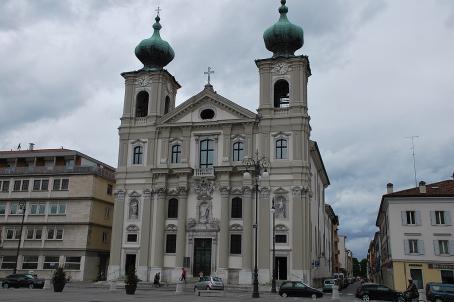Basilica of Mary of the Assumption
The Basilica of Mary of the Assumption is one of the most important pilgrimage sites in Slovenia. The basilica is the branch church of the parish of Solkan, but it also serves as the church of the Franciscan monastery of Sveta Gora. The church was first built in the first half of the 16th century after a pre-existing shrine of Mary was demolished by the Turks in 1496. Destroyed during the First World War, the present basilica was erected in its place between 1920 and 1932.






